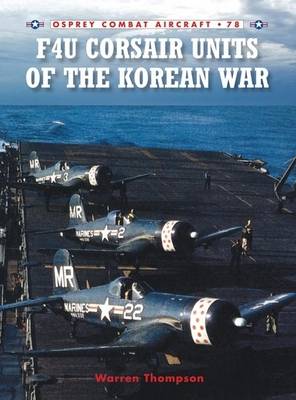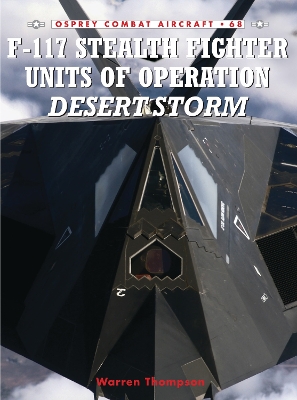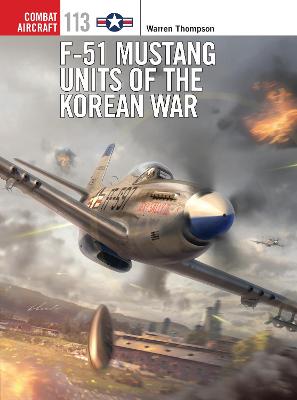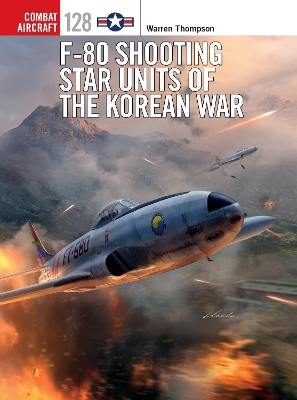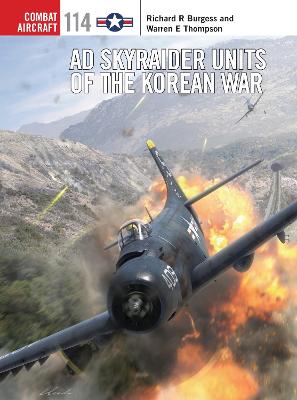Combat Aircraft
3 primary works • 6 total works
Book 7
This book tells the story of the 26 US Navy Squadrons, most of which were carrier based, and the six Marine Corps F-4 squadrons that flew combat missions against the North Koreans. Drawing from a vast repository of personal interviews with F-4 pilots, the author paints a harrowing picture of the deadly combat of this often forgotten air war. Included in this volume is the story of Lt Guy Bordelon, the US Navy's sole ace of the Korean War, who flew an F4U-5N night-fighter against the night raiders sent up by the Korean Air Force. Supporting the text is a vast number of previously unpublished private photographs that bring the stories of these pilots to life. Finally the book contains extensive appendices that detail every unit deployment by carrier, air group, Corsair model and tail code, as well as detailed lists noting every Corsair lost in the war.
Book 68
During the final years of the 20th century, the most significant break-through in military weaponry was the concept of Stealth technology, and the first mass-produced weapon to utilize this to perfection was the F-117 Nighthawk. Originally delivered in 1982, its existence was officially denied until the Iraqi invasion of Kuwait, when it entered the public spotlight over the skies of Baghdad. Illustrated with stunning color photographs of the F-117 above Iraq, and complemented by numerous personal accounts from the pilots themselves, this book explores the history and combat experience of one of the most secretive planes ever built.
Book 113
By the time the Korean War erupted, the F-51 Mustang was seen as obsolete, but that view quickly changed when the USAF rushed 145 of them to the theatre in late 1950. They had the endurance to attack targets in Korea from bases in Japan, where the modern F-86 fighters and other jets did not. Rather than the interceptor and escort fighter roles the Mustang had performed during World War 2, in the Korean War they were assigned to ground attack missions - striking at communist troop columns advancing south. This is the chronicle of the Mustang units that fought in the Korean War, detailing the type's involvement in a series of intense actions, its successes and its considerable losses. Drawing on meticulous research and gripping first-hand accounts from aircrew, this book explains how the faithful Mustang was able to roll back the years, fight, and prove itself in a new era of aerial warfare.
Built within a 180-day time limit in 1943, the F-80 Shooting Star first saw service in Italy in the final year of World War 2, and consequently was sent to bases in the US, Europe and the Far East after VJ Day. It was the latter groups based in Japan that initially bore the brunt of the early fighting in Korea, engaging MiG-15s in the world's first jet-versus-jet combat.
Flown principally by the 8th and 49th Fighter Bomber Wings, the F-80 served until the end of the war, completing an astonishing 98,515 combat sorties, shooting down 17 aircraft (including three of the vastly superior MiG-15s), dropping over 33,000 tons of bombs, and firing over 80,000 air-to-ground rockets. Aside from the fighter-bomber Shooting Stars, the ultra-rare, but heavily used, photo-reconnaissance RF-80A saw extensive use in the frontline in Korea as a replacement for the vulnerable RF-51D.
Filled with first-hand accounts and rare colour photographs taken by the veterans themselves, this is the engrossing story of the pioneering F-80 Shooting Star.
Flown principally by the 8th and 49th Fighter Bomber Wings, the F-80 served until the end of the war, completing an astonishing 98,515 combat sorties, shooting down 17 aircraft (including three of the vastly superior MiG-15s), dropping over 33,000 tons of bombs, and firing over 80,000 air-to-ground rockets. Aside from the fighter-bomber Shooting Stars, the ultra-rare, but heavily used, photo-reconnaissance RF-80A saw extensive use in the frontline in Korea as a replacement for the vulnerable RF-51D.
Filled with first-hand accounts and rare colour photographs taken by the veterans themselves, this is the engrossing story of the pioneering F-80 Shooting Star.
The Douglas AD Skyraider is considered the most effective naval aircraft of the Korean War despite the emergence of new jet fighters that captured public imagination. Built to replace the World War 2 workhorses like the Dauntless, Helldiver and Avenger diveand torpedo-bombers, the Skyraider operated numerous combat missions from carrier decks and from US Marine Corps land bases throughout the conflict. Drawing from personal interviews with AD pilots, the authors paint a harrowing picture of the deadly combat of this often forgotten air war as pilots took on Chinese and North Korean forces during daring night attacks and whilst outnumbered in daytime attacks.
A fully illustrated study of the extraordinarily successful early-generation jet, the F2H Banshee, a frontline aircraft that served with 27 US Navy and US Marine Corps squadrons and three Royal Canadian Navy (RCN) squadrons.
The F2H Banshee was an extraordinarily successful early-generation jet that outlasted both contemporary and more modern fighter types on the decks of the US Navy’s aircraft carriers in the 1950s. It served in a variety of roles, undertaking fighter, strike fighter, night-fighter, nuclear strike and photo-reconnaissance missions. The Banshee was a frontline aircraft for more than a decade in an era when jet fighters came and went with relatively short service careers.
This book examines the entire service life of the F2H in the service of the US Navy, US Marine Corps and the RCN. Initially created as a replacement aircraft for McDonnell’s pioneering FH1 Phantom, the F2H served in the Korean War as a strike fighter, close air support aircraft, B29 escort, and photoreconnaissance aircraft, including the latter’s forays over the Soviet Union and China. Post service in Korea, the Banshee served as a carrier based nuclear strike aircraft, followed by its service as a defensive fighter for antisubmarine aircraft carriers.
Filled with first-hand accounts and rare colour photographs, this is the engrossing story of the F2H Banshee, exploring its variety of roles in service and detailing the technology development that improved the aircraft’s capabilities over time.
The F2H Banshee was an extraordinarily successful early-generation jet that outlasted both contemporary and more modern fighter types on the decks of the US Navy’s aircraft carriers in the 1950s. It served in a variety of roles, undertaking fighter, strike fighter, night-fighter, nuclear strike and photo-reconnaissance missions. The Banshee was a frontline aircraft for more than a decade in an era when jet fighters came and went with relatively short service careers.
This book examines the entire service life of the F2H in the service of the US Navy, US Marine Corps and the RCN. Initially created as a replacement aircraft for McDonnell’s pioneering FH1 Phantom, the F2H served in the Korean War as a strike fighter, close air support aircraft, B29 escort, and photoreconnaissance aircraft, including the latter’s forays over the Soviet Union and China. Post service in Korea, the Banshee served as a carrier based nuclear strike aircraft, followed by its service as a defensive fighter for antisubmarine aircraft carriers.
Filled with first-hand accounts and rare colour photographs, this is the engrossing story of the F2H Banshee, exploring its variety of roles in service and detailing the technology development that improved the aircraft’s capabilities over time.
